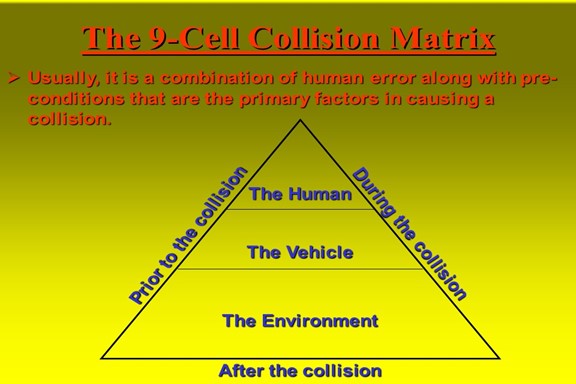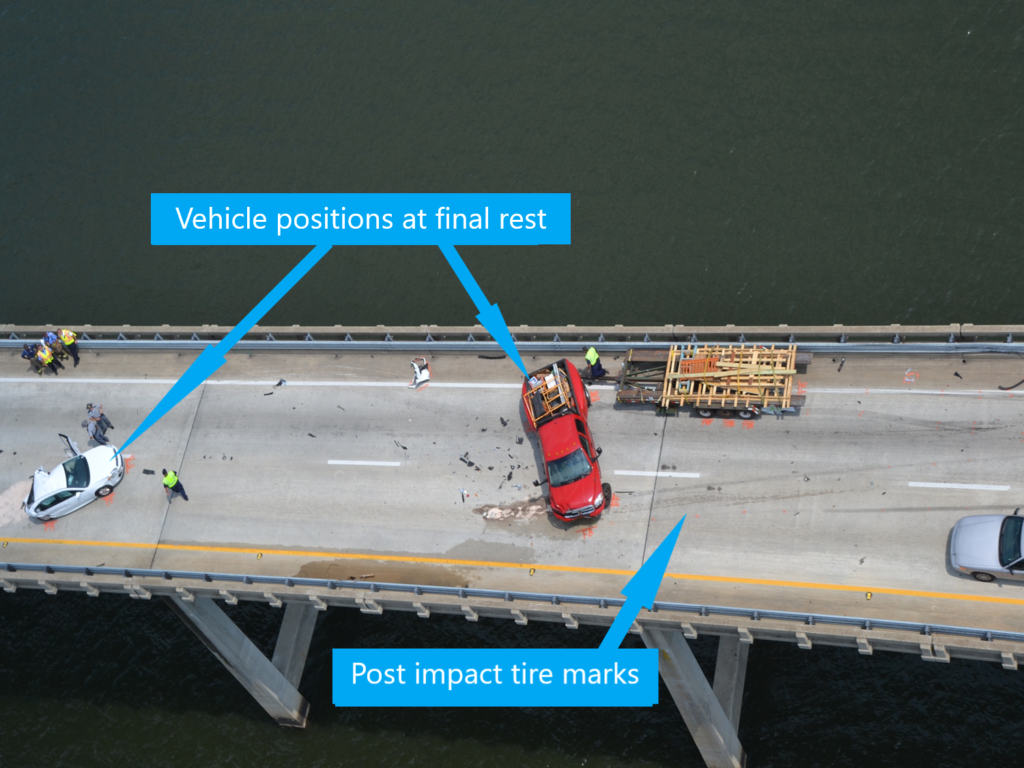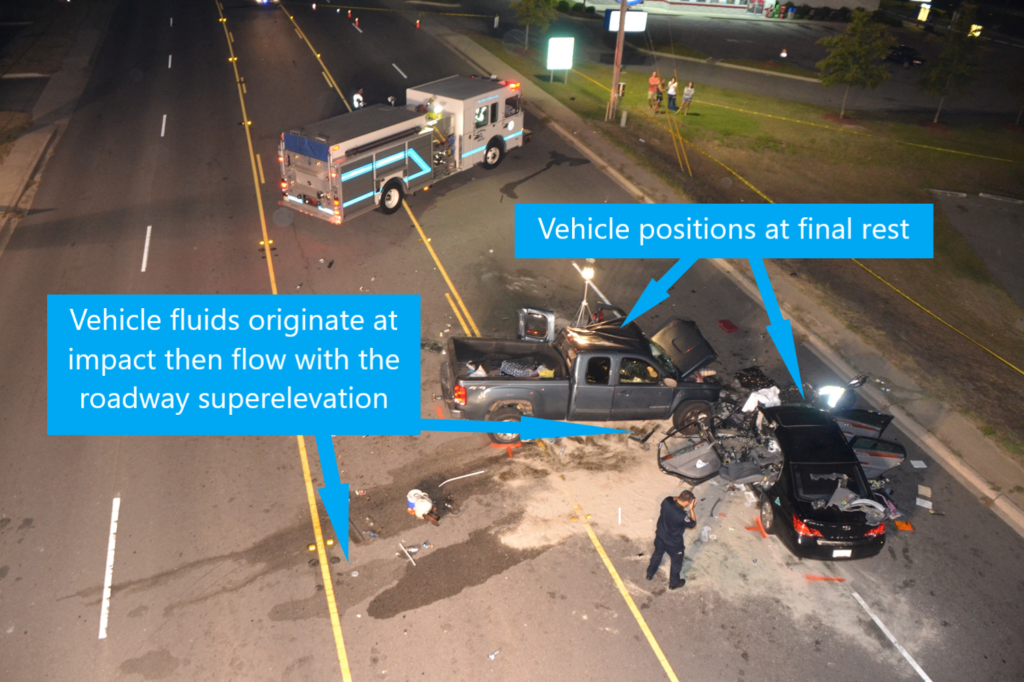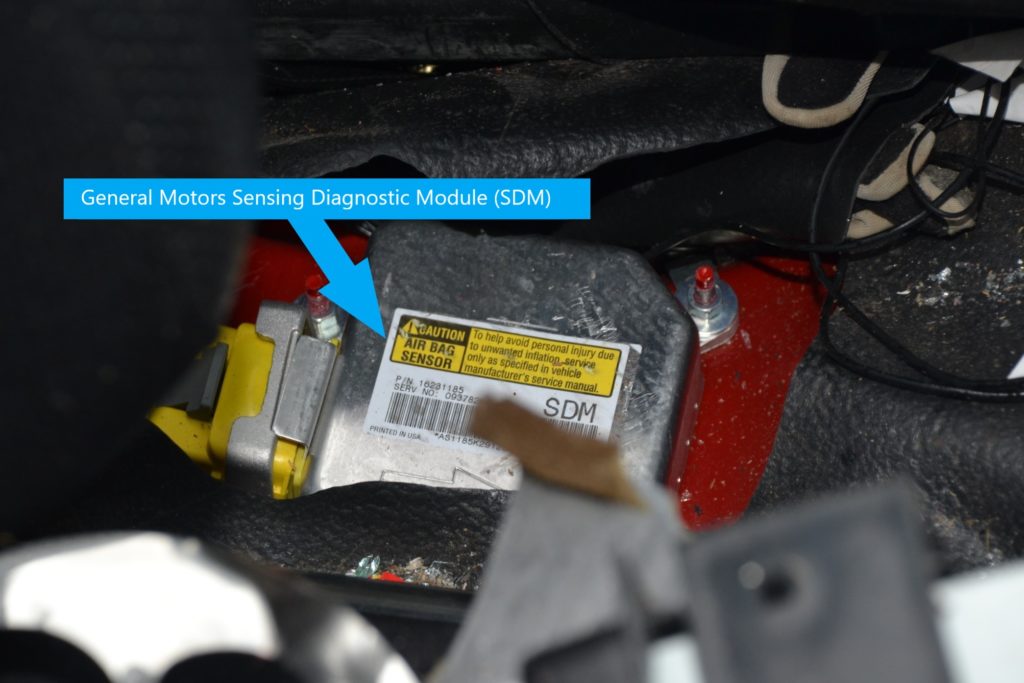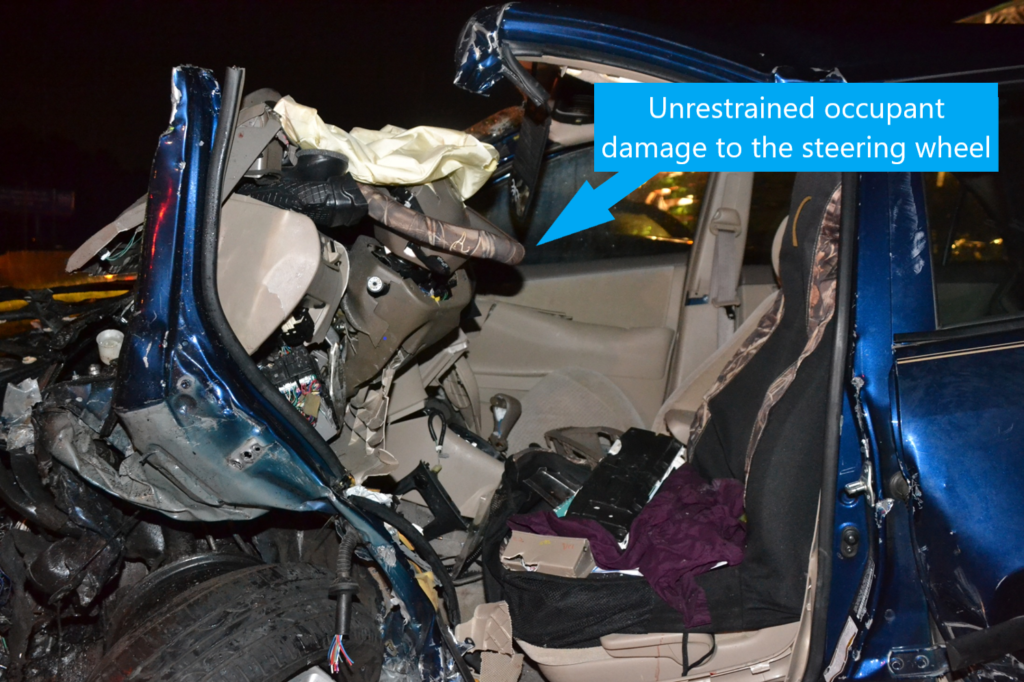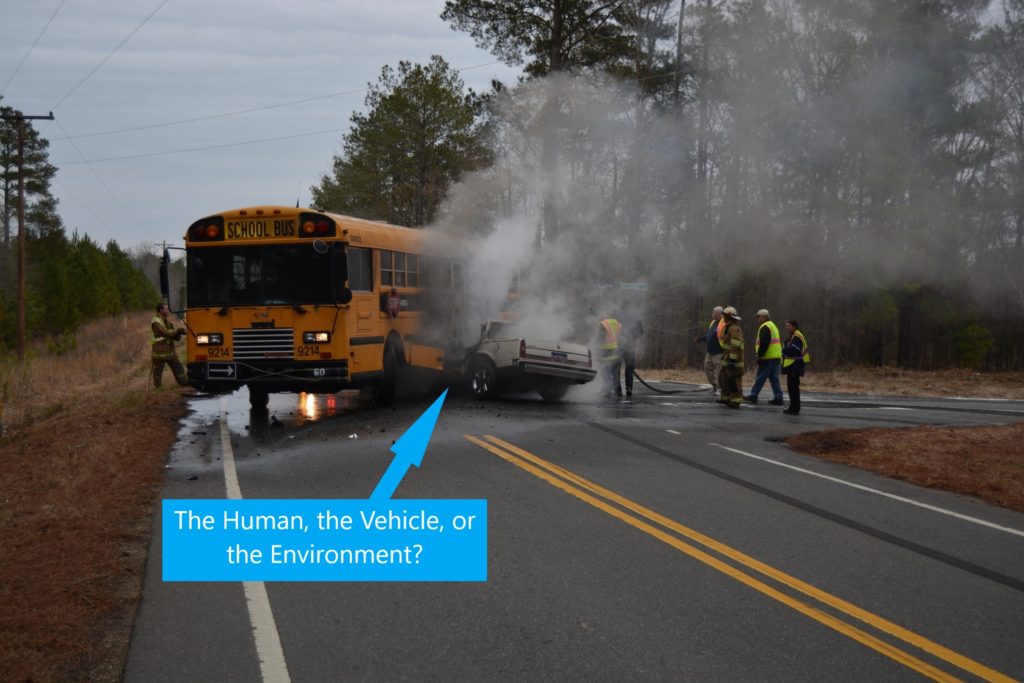It’s mid-January, the high today is 28 degrees with lows in the teens as the Carolinas are in the grip of a Canadian cold front and I’m on call tonight. The phone rings at 3:00 am; yes Sir, three cars with two fatalities, I-85 northbound, yes Sir, on the way. Despite the hurdles that lie in front of me – cold, fatigue, the loss of life – my job with the South Carolina Highway Patrol Multi-Disciplinary Accident Investigation Team (MAIT) is to investigate, document, and ultimately prosecute chargeable collisions. To properly reconstruct this collision, three essential and distinct categories must be investigated and documented in order to provide a well-founded explanation of the series of events prior to, during, and after the collision regarding the human, the vehicle, and the environment; this investigative technique is known as the 9-cell collision reconstruction matrix. In this first blog, let’s briefly take a closer look at each of the matrix elements and later in future blogs we will begin to unearth the major details of each in earnest.
ENVIRONMENTAL
Let’s begin at the end, shall we? Why begin at the end? Simply because when you arrive on the scene of a vehicle collision everything is over, the smoke has cleared. The vehicles or pedestrians are at their positions of final rest. All the scene evidence is there, tire marks, gouges, fluid spray, the debris field. What happened in the wreck may not at first be easily discernable, but all the key environmental evidence as it pertains to the wreck scene is right there in front on you.
What other aspects of the environment may play a key role in a collision reconstruction? What about the weather? Was the roadway surface dry or wet? What about snow or ice? Each of these can adversely affect the friction value of the collision surface and thus any vehicle speed calculations. Was there any potential vision obstruction located at the collision scene, particularly if we’re investigating a fail-to-yield type collision, such as a road sign, trees or bushes, perhaps a hillcrest or the setting sun? Did the wreck happen during the hours of darkness and what amount of ambient lighting was available, especially in vehicle vs. pedestrian cases? Were there any cameras located at or near the collision location that may have captured the wreck itself or maybe the seconds leading up to or after the wreck? What about improper DOT roadway signage at or near the crash? Proper documentation of all potential environmental factors including interpretation of the scene evidence will prove crucial.
VEHICLE
Now let’s examine the vehicles involved in the crash. What can a careful inspection of the vehicle tell us? The short answer is a lot! Since roughly 2012 most vehicles on the roadway are equipped with an imageable Airbag Control Module (ACM). Data from the ACM can be imaged using the Bosch Crash Data Retrieval hardware and software. The primary function of the ACM is to deploy the vehicle’s safety devices such as airbags and seatbelt pretensioners to mitigate occupant injury. In order to do this the ACM must gauge and record data such as speed, braking, and change of velocity. The ACM also records seatbelt usage and whether a particular seat in the vehicle is occupied at the time of the wreck. Other useful ACM data includes engine throttle position and engine RPM; was the wreck really an accident or an intentional act for the purpose of fraud, suicide or murder?
Vehicle damage profiles can be used in a variety of ways including alignment at impact for collision lane location, vehicle approach and departure angles, maximum crush depth, and the size of the object struck as well as vehicle internal damage caused by unrestrained occupants. What was the overall condition of the vehicle prior to the collision; bald tires, bad brakes, loose steering, improper vehicle lighting, maybe there was a National Highway Traffic Safety Administration recall on the vehicle that was never addressed by the owner? Was the vehicle equipped with an Original Equipment Manufacturer (OEM) tire size? What was the vehicle’s pre and post impact mechanical condition? Proper documentation of the collision vehicle is a must.
HUMAN FACTORS
Last, but certainly not least, let’s look at several human factors that can contribute to collisions. Chief among them is inattention. This high priest of causative factors presides over car crashes in many ways: cell phone usage, fatigue, intoxication, or any other multitude of divided attention activities. Human factors can also reveal themselves in more subtle ways such as age or disability. Medical events such as heart attacks or strokes, which could ultimately be the cause of death, can often go unnoticed or undocumented particularly in severe car crashes where the delta-v or change of velocity experienced by the vehicle occupants may have plausibly resulted in a fatality.
Another important tool in determining the human element in collisions is interviews. At the top of the list is interviews with the vehicle drivers as well as any vehicle occupants. Interviews with family and friends, particularly in collisions that result in a fatality, are crucial in supplying a multitude of investigative information including direction of travel, trip origination and destination, mental state, intoxication level, and any prescribed medication. Driver perception and reaction times are key factors in crashes and are dictated heavily by age, visibility, and past experiences. Injury patterns and their location on the human body can often reveal vehicle seating location (Kinematics) and vehicle identification / impact location regarding pedestrian strikes. Apart from any uncontrolled collision circumstances, an extensive documentation of the human element usually results in a concrete diagnosis of the wreck cause.
By examining all possible causative factors of the 9-cell collision reconstruction matrix as they relate to the human, the vehicle, and the environment before, during, and after impact, we as collision reconstrutionists can begin to place the pieces of the puzzle back together and bring some degree of closure to those involved.
Mark Turner, ACTAR #2368, is a vehicle collision reconstructionist with Warren. Prior to joining Warren, he worked for 25 years as a South Carolina Highway Patrol Trooper including 10 years as a Multi-Disciplinary Accident Investigation Team (M.A.I.T.) leader (corporal). Mark is accredited as a Traffic Accident Reconstructionist by The Accreditation Commission for Traffic Accident Reconstruction (ACTAR). He investigated in excess of 900 vehicle accidents and incidents as a trooper. Then, as a member of M.A.I.T. for 10 years, he was involved in over 1000 detailed investigations and collision reconstructions. Mark has testified multiple times in state courts and has been court qualified as an expert in accident investigation and collision reconstruction. Mark is a member of the South Carolina Association of Reconstruction Specialists (SCARS), the International Association of Accident Reconstruction Specialists (IAARS), and the National Association of Professional Accident Reconstructionist (NAPARS). He completed the Law Enforcement Basic Program at the South Carolina Criminal Justice Academy in Columbia, South Carolina.



